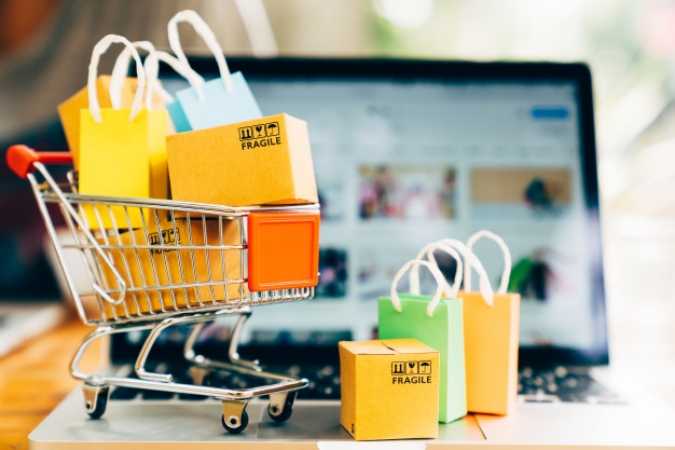In a world dominated by the relentless push for more — more shopping, more products, more consumption — a quiet yet powerful counter-movement is emerging. Across the United States, a growing number of people are rejecting the age-old mantra of “shop ‘til you drop” and embracing a minimalist lifestyle that prioritizes using fewer, better-quality items. This phenomenon, now known as “underconsumption core,” is gaining momentum, particularly among influencers on social media platforms like TikTok.
In contrast to the typical influencers who encourage followers to purchase the latest fashion trends, cutting-edge technology, or beauty products, these underconsumption advocates highlight a radically different approach. They showcase a life centered on fewer, long-lasting possessions — items that are used for years, if not decades. Whether it’s towels passed down from family members, a carefully curated makeup collection with just a few key products, or second-hand furniture sourced from thrift stores, these individuals are sending a clear message: it’s possible to live a fulfilling life without constantly accumulating more.
Megan Doherty Bea, an assistant professor of consumer science at the University of Wisconsin-Madison, explains that the underconsumption trend is a direct reaction against the societal pressure to consume endlessly. “It’s really pushing back against this idea that you need to constantly be buying things to have a happy and fulfilling life,” Bea said. Instead of chasing fleeting trends, underconsumption advocates argue for a return to more mindful, sustainable consumption patterns.
This shift in consumer behavior is evidenced by a sharp increase in online interest. Google Trends data reveals that searches for “underconsumption core” surged by over 4,250% in the past year alone. On TikTok, videos showcasing this minimalist lifestyle are garnering hundreds of thousands of likes, as users resonate with the idea of scaling back their spending habits and simplifying their lives.
But the appeal of underconsumption isn’t solely about tightening the purse strings or decluttering homes. Many followers of the movement see it as a way to resist the overwhelming cultural pressures to emulate an unattainable lifestyle. At the same time, they are also motivated by a desire to reduce their environmental impact. The underconsumption movement, in many ways, represents a direct backlash against what has become known as overconsumption — a world where closets overflow with fast fashion, kitchen cabinets are crammed with trendy gadgets, and beauty counters are stocked with products no one really needs.
Bea suggests that what we currently call “underconsumption” should, in fact, be considered normal consumption. But in a consumerist society, where excess is often celebrated, the deliberate choice to live with less has become a revolutionary act.
The economic context is also playing a significant role in the rise of the underconsumption movement. With inflation pushing up prices on everything from groceries to rent, and many Americans feeling the squeeze of rising interest rates, the idea of spending less and saving more is becoming increasingly appealing. The financial security built up during the Covid-19 pandemic has dwindled for many households, leading to a recalibration of spending habits.
However, underconsumption isn’t just about financial prudence. It’s also about authenticity. Many individuals are fed up with what they see as inauthentic marketing tactics employed by companies and influencers. Diana Wiebe, a 30-year-old TikTok content creator, has amassed over 200,000 followers by posting “de-influencing” videos that critique the products influencers are paid to promote. Wiebe, who works in communications for a legal nonprofit, often mocks these products as unnecessary, and her followers say they hear her voice in their heads when making purchasing decisions, reminding them not to buy into the hype.
Retailers, from department stores like Kohl’s to major outlets like Home Depot, are feeling the effects of this consumer shift. During the height of the pandemic, Americans were spending heavily on everything from exercise equipment to baking supplies, as they sought ways to entertain themselves while stuck at home. However, as lockdown restrictions lifted, there was a notable shift in spending patterns. Instead of purchasing more products, many consumers turned to “revenge spending,” using their money for experiences like vacations and concerts. Now, with the rise of underconsumption, it seems that consumers are once again re-evaluating their priorities.
While some might dismiss underconsumption as just another trend, Wiebe believes it represents something deeper — a return to normalizing a simpler, more authentic way of life. “I see it as more than a trend,” she says. “I see it as just normalizing normal life again, and maybe even romanticizing it a little bit too.”
Nonetheless, there are skeptics of the movement. Some argue that the focus on consuming less risks overlooking the benefits that shopping can provide. Suzanne Lambert, a 32-year-old consultant from Virginia, acknowledges that watching underconsumption videos has helped her become more mindful of her own spending habits. She recently canceled a beauty box subscription and decided against replacing old glassware. But Lambert questions whether underconsumption is a one-size-fits-all solution. “To say there’s over- and underconsumption is saying that there’s an appropriate, one-size-fits-all measure,” she says. “And I just don’t think that’s true.”
Experts like Scott Rick, an associate professor of marketing at the University of Michigan, point out that shopping can actually have psychological benefits. Rick’s research suggests that for some individuals, retail therapy can provide a sense of control and help alleviate negative emotions. “I don’t necessarily see a problem with either under- or overconsumption,” Rick says. “Who’s to say what you should be spending your money on?”
At its core, the underconsumption movement is about choice. Whether individuals are driven by financial concerns, environmental considerations, or a desire to push back against a consumer-driven culture, the trend shows no signs of slowing down. And as more Americans re-evaluate their relationship with consumption, the question remains: could living with less become the new normal?







